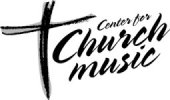Center For Church Music, Songs & Hymns

Browse Hymns:
Browse by:
We Invite You To Sing
To sing with us, 1) Click on the music thumbnail icon to view the sheet music (you don't have to read music!), and 2) Engage the audio file by clicking on the Real audio or Mp3 file.
Find Songs And Hymns
Facts:
- Lyricist: Charles Wesley
Lyrics Date: 1738
Key: G
Theme: The way of salvation, Salvation by grace
- Composer: Thomas Campbell
Music Date: 1825
Tune Name: SAGINA
Meter: L.M.D.
Scripture: Romans 5:8
Devotional:
The Great Mystery
Everybody loves a good mystery. You might say that our hymn for this week describes a great mystery. Charles Wesley wrote it soon after He came to Christ. As he looks back on his life, he sees himself as a prisoner in a dark dungeon, chained by the sins that he committed-and even more "made captive" by the sin that was a part of his very being.
One night, the gospel of Christ-the good news that Christ had died to meet his need-seeme...
See More
The Great Mystery
Everybody loves a good mystery. You might say that our hymn for this week describes a great mystery. Charles Wesley wrote it soon after He came to Christ. As he looks back on his life, he sees himself as a prisoner in a dark dungeon, chained by the sins that he committed-and even more "made captive" by the sin that was a part of his very being.
One night, the gospel of Christ-the good news that Christ had died to meet his need-seemed to flood his own personal dungeon with light, breaking the chains and setting him free. The guilt was finally gone. For the first time, Wesley seemed to be really alive because he possessed the supernatural life of Jesus Christ!
Perhaps you may think that this hymn describes the dramatic experience of one who was rescued from the life of terrible sin and ruin... perhaps drugs, adultery, murder or who knows what? But at the time of his conversion, Charles Wesley had been a pastor in his church for over three years. And he had just returned from a "missionary" trip to America.
But in all of this religious activity, he had never experienced peace-the peace that only God can give. Peace cannot be manufactured or "faked". Christ had never come to dwell in his life. He looked good on the outside, but the mystery of a life committed to Christ was not to be found in him.
On May 20, 1738, around midnight, Charles Wesley was saved. Finally, he began to understand the great mystery of being "in Christ." It's a little like that night, 1900 years ago, when Jesus said to the Jewish religious leader: Nicodemus, "You must be born again." Nicodemus was a respected religious leader, but he wasn't born again. He had never experienced the "mystery."
Perhaps you heard, recently, of a 71 year old minister, who after spending fifty years in the service of the church, had just come to Jesus Christ. Like the experience Charles Wesley describes in his hymn, the old minister finally understood the "mystery" of being "in Christ." He realized, as we must also, that "doing good" means nothing to God. To accept Christ's love and sacrifice for himself was to find the source of eternal life. This, indeed, is the best-and greatest mystery of all!
Adapted from a story by Cliff Barrows
See Less
Hymn Story:
Charles Wesley, founder of the movement known as Methodism with his brother, John, was ordained as a priest in the Church of England in 1735. However, three years later, the evening of May 21, 1738, reportedly after prolonged Bible reading he wrote:
"At midnight I gave myself to Christ, assured that I was safe, whether sleeping or waking. I had the continual experience of His power to overcome all temptation, and I confessed with joy and surprise that He was able to do exceeding...
See More
Charles Wesley, founder of the movement known as Methodism with his brother, John, was ordained as a priest in the Church of England in 1735. However, three years later, the evening of May 21, 1738, reportedly after prolonged Bible reading he wrote:
"At midnight I gave myself to Christ, assured that I was safe, whether sleeping or waking. I had the continual experience of His power to overcome all temptation, and I confessed with joy and surprise that He was able to do exceedingly abundantly for me above what I can ask or think."
Another writer states that he recorded in his journal:
"I now found myself at peace with God, and rejoiced in hope of loving Christ. I saw that by faith I stood."
Two days later, his journal reported that he had begun writing a hymn. This hymn was likely "And Can It Be" because of the vivid testimony of stanza four. This hymn and "Where Shall My Wondering Soul Begin" were the first of the 6000 plus hymns that he wrote. Also, it is reported that his brother John sang a hymn to the tune CRUCIFIXION on his own conversion to "vital religion" three days later. Although it was not stated what hymn it was, the Foundery Tune Book, published by John Wesley in 1742, paired "And Can It Be" with CRUCIFIXION.
"And Can It Be" was first published in John Wesley's Psalms and Hymns in 1738, then in Hymns and Sacred Poems in 1739. From middle of the nineteenth century on, "And Can It Be" has been set to SAGINA.


